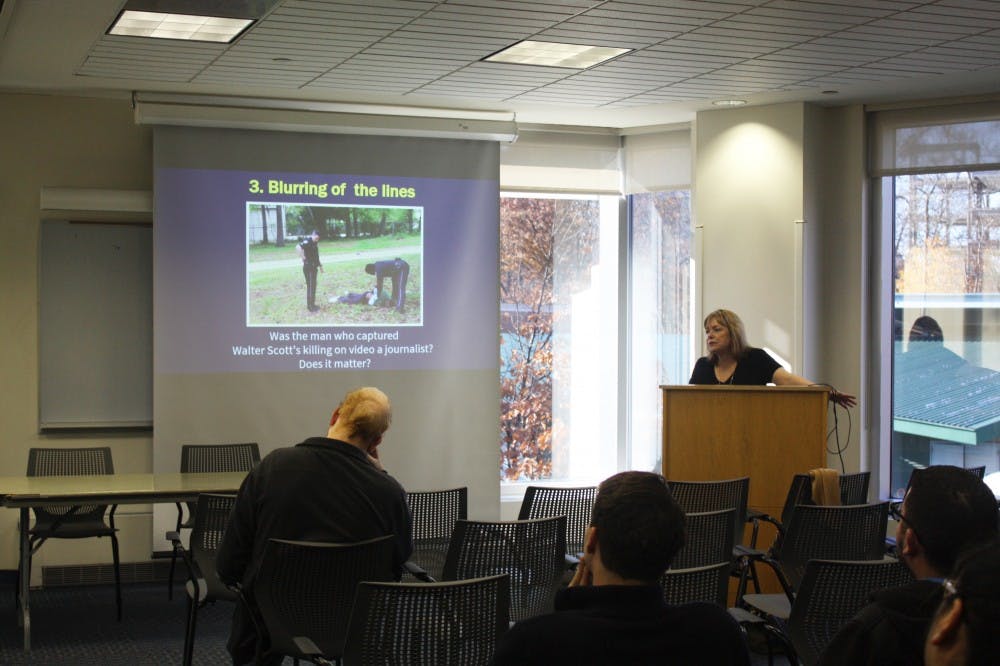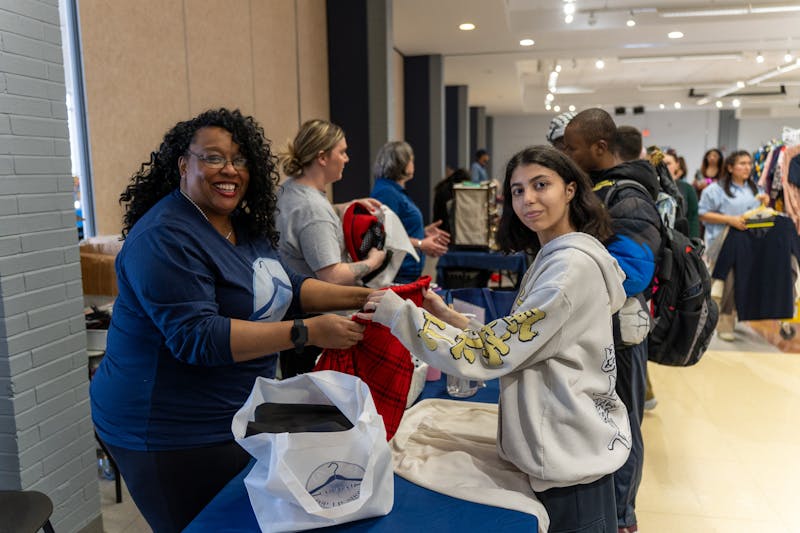On Wed. Nov. 29, students from The College of Liberal Arts were treated to a lesson in media literacy at the third annual America Now Teach In; a lecture series that informs its audience about issues that pertain to the United States of America in Room 226 of the Miron Student Center (MSC).
Titled "America Now: Fake News," the event focused on how certain inaccuracies of credible and impostor media platforms in reporting various stories can instigate deeper issues in the world, as well as the different scientific factors that contribute to what people use for their sources of news information. The afternoon lecture, hosted by devoted Kean Professor, Dr. Jonathan Mercantini, featured two renowned professors from the school that spoke on the issue of fake news.
The audience was warmly greeted by Dr. Mercantini, who gave acknowledgement to his fellow advisors and coordinators of the event, Dr. Sara Compion and Janice Marie Lowry, along with Kean University's Student Organization. Soon after, he explained the event's relevance to today's world, including the newfound importance that the now-popular term that has been used by media professionals, politicians and the world's inhabitants alike.
"In contemporary America, perhaps no skill is more important than media literacy. We are all apparent and aware that we are living in a postmodern world where we are all bombarded with news, information and images. It becomes exhausting to process it all," Mercantini said. "The internet gives everyone and anyone the ability to make themselves look like experts. On Twitter, everyone's feed looks the same, whether you are a Pulitzer Prize-winning journalist, or a college student."
Mercantini also commented on the potency of social media in portraying the assumed sense of credibility in the same way.
"And, of course, when we have our president, and other national and global leaders challenging the legitimacy of well-established news organizations of the entire journalistic process, we get a newer situation where the ability to decipher what is legitimate and what is not becomes vital," Mercantini also responded.
Dr. Pat Winters Lauro, the director of the Journalism program in the School of Communications at Kean University, subsequently gave a lengthy, detailed presentation on fake news with a 12-slide PowerPoint. The journalism professor spoke on a variety of topics relating to illegitimate news, ranging from current events to the different types of fake news stories in the media and around the world.
One case study in particular, that Lauro explained dealt with misinformation and disinformation, and their many different faces. A study done by Jonathan Albright, a social media researcher out of the University of North Carolina-Chapel Hill, said that there are at least seven different kinds of misinformation and disinformation.
The manipulation of content is the first tactic of misrepresenting information, where the use of genuine information is altered, or manipulated to deceive. Photoshopping a picture is an exact example of this skewering of information.
"The second one, titled "False Context", is where true information may be completely out of context. It could be information taken from a long time ago, or a piece of information that readers may not have the beginning or end, so it will be taken out of context," Lauro said. "The third tactic, known as the false connection, is where the headline's visuals or captions do not support the content, where something is 100 percent false and created by someone who may not be credible for a variety of reasons."
Lauro went on to mention other methods of fabrication done by media perpetrators, such as the use of non-credible domain names that do not use a ".com" or a ".org", even though they may look like websites of media companies like CNN and MSNBC.
There is also satire and parody that can, believe it or not, be believed. The Kean professor then gave a concise approach on how this satirical rhetoric could be taken seriously.
A slide then appeared pertaining to how satire translates into a headline, showing an old newspaper with Pope Francis giving his praise to President Trump, something that had not happened at all.
"According to MSNBC, this was posted from a satirical website. However sometimes, these people create these stories for fun and fail to realize that most people know that these stories are absurd," Lauro said.
Lauro went on to speak about Pope Francis's inability to accomplish this, because the Catholic Church cannot endorse political candidates.
"Second of all, what happened here was that the story got shared over 868,000 times. We do not know if the people shared it as a joke or as an actual belief, although this site was debunked by reliable fact-checking sites like Snopes.com that credible journalists use."
After the director of journalism at Kean finished her speech, Dr. Brian Regal was announced onto the wooden podium in room 226. Following Lauro's presentation that focused on the different types of fake news with examples, Dr. Regal, an assistant history professor at Kean and Kean alumni with a masters and doctorate earned at Drew University, informed the crowd about the structure of fake news stories and the science behind them.
Dr. Regal's presentation was slightly shorter, but succeeded in conveying its salience to the group of students present. Regal then defined the terms of fake news, saying that they were false stories used to be created to influence political views through a bias or as a joke.
He spoke about the differences between science and psuedoscience, which he said were beliefs, theories or practices that have been considered as scientific but do not hold any basis in scientific fact.
Furthermore, in continuing to explain what confirmation biases were, other terms like the backfire effect, which centered around the idea that people are likely to resist facts if they conflict with their beliefs, were taught to the audience.
Examples of these different scientific definitions regarded current events that included the happenings in climate change and the various conspiracy theories that exist in the minds of skeptics. These, in turn, as explained by Dr. Regal, caused the need to create fabricated tales in the effort to affirm a bias and alter the truth.
"If something sounds too outrageous, it likely is false. Always remember to question everything," Regal said. "You do not win an award for re-tweeting a story. What is taught to you as students at Kean University is to research everything you see. Do not just assume it is something true if you see it in a book or story once. If so, read it again."
Undoubtedly, Mercantini, Lauro and Regal's audience will always remember to think twice before confirming the truth in just about everything from now on, thanks to this informative and enjoyable afternoon.







